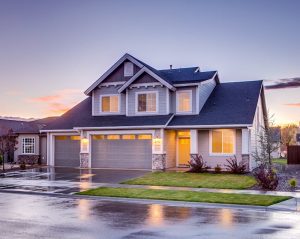Home décor and improvements can’t cure anxiety, but they can surely help you cope better. When even the smallest trigger can amplify your negative feelings, you must maintain an environment that nurtures calm, not restlessness.
Assess the state of your home right now. Does it make you feel relaxed and in control? Or does it remind you of endless chores and renovations you wish you could make? During a global health crisis, making home improvements to help with your anxiety is one of the best investments you can make. Start by clearing your house of clutter, either by getting proper storage or throwing out things you don’t actually need. Clutter is your number one enemy when creating a relaxing environment. Once you have a clutter-free perspective of what you’re working with, it’s time to begin.
Artworks and Memorabilia
Now that you’ve put away the non-essential items in your house, it’s time to either buy new ones or hang up those that bring you to your “happy place.” Decorate your walls with artworks and memorabilia that remind you of sceneries you love or memories that give you a positive vibe. The larger, the better so that they become the room’s focal point. Opt for vibrant colors like yellows and oranges. Choose tranquil sceneries like mountains and beaches. Turning these feel-good decors into each room’s main attraction will regularly remind you of positive things, which in turn can help fend off anxiety.
Natural Elements
If you’re not a big fan of artworks, you can turn to indoor plants for therapeutic company. Get one or two plants in large pots and place them beside doorways. Seeing greens upon entering your house or certain rooms can positively impact your mind and body. They will serve as a cue that you’ve entered your safe space, hopefully curbing your anxiety.
Get small plants like cacti and succulents to decorate tabletops, and get hanging plants to accentuate your patio. Their air-cleaning and oxygen-boosting effects will also benefit your overall wellbeing by helping you avoid allergies, asthma attacks, and respiratory problems.
You’ll also want to have a vertical herb garden in your kitchen if you think you’re not up to big gardening projects. Herbs are simpler to nurture, and they’ll motivate you to eat cleaner and healthier too.

Another natural element you shouldn’t neglect is water. You can install mini fountains in your backyard, or go big and have a swimming pool instead. The sound of water can soothe you. Oftentimes, just being near one is enough to clear your thoughts. Incorporating swimming into your weekly routine, even just for thirty minutes a day, can reportedly improve your chances of overcoming anxiety and depression. Just make sure that you educate yourself on proper maintenance so that it doesn’t end up giving you more frustrations in the long run. You’ll want to know how to use a net skimmer, pool vacuum, and pool brush to keep it clean. For optimum health benefits, look for muriatic acid substitutes from companies like Poolsmith Technologies to keep away from chemical injuries. It sounds like a lot of work at first, but the effort is worth it if you consider the wonders it will do to your mind and physique when regularly used.
Wind chimes add a fine finishing touch to your incorporation of natural elements. Combined, they treat your senses to relaxing stimulants that give your anxiety little room to settle in.
Go Neutral
Neutral colors, whether for the walls or furniture, are better at creating a calming atmosphere. You can have darker shades accentuate sofas, walls, and tables, but it’s better if most of the room is in neutral shades. Think mint green, powder blue, and light gray for bedrooms, living rooms, and kitchens. If you want to make the space look bigger, go for white. This will help the warm colors pop out even more without being distracting.
Another way to go neutral is to decorate with wooden furniture. Hardwood flooring and mahogany desks invoke the feeling of being grounded, which might be exactly what you need in anxious times.
Focus on textures that make you want to lay back and put your feet up. It could be leather, faux fur, silk, or cotton. Add in natural ventilation by keeping your windows open, and you have the perfect space for mediation or relaxation after a hard day at work.
Prioritize Your Feelings
When it comes to creating a relaxing home, prioritize your feelings. You don’t have to conform to the trendiest aesthetics if they don’t make you happy. Your home should be your happy place and safe space, and it’s up to you to turn it into one for the sake of your mental health.











